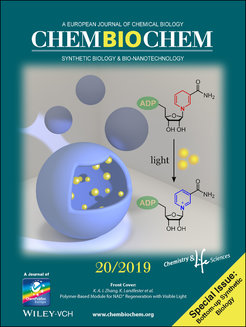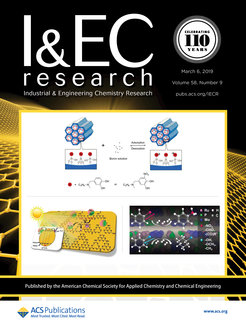Selected Articles
Here, we present selected publications, articles and books, published by scientists of the MPI Magdeburg.
2019
Polymer‐Based Module for NAD+ Regeneration with Visible Light
Highlight on the Front Cover of Volume 20 /2019 of ChemBioChem

Giant polymer vesicles carrying photocatalytic nanoparticles made out of a fully organic conjugated polymer were used to create a functional module able to artificially regenerate the oxidized form of the nicotinamide adenine nucleotide cofactor. The regeneration happens only under irradiation of visible light, with the catalytic process being efficiently shielded from external chemical stress due to the barrier offered by the membrane of the polymeric vesicles. More information can be found in the communication by K. A. I. Zhang, K. Landfester, et al. (20) 2019, pp. 2593.
Continuous Separation of Lignin from Organosolv Pulping Liquors: Combined Lignin Particle Formation and Solvent Recovery

The solubility and softening behavior of lignin from acid-catalyzed ethanol/water pulping was determined in various ethanol/water solvent mixtures and a process relevant temperature range. Operation conditions for an optimized lignin separation process have been derived from the determined lignin phase behavior. A continuous lignin separation and solvent recovery process has been developed in lab scale and was successfully up-scaled to a dedicated pilot plant at Fraunhofer CBP (WO2016062676A1). Agglomeration of softened lignin particles and lignin “stickiness” were adjusted by temperature (38–44 °C at 80–120 mbar) and ethanol content of the lignin dispersion (6–9 wt %). In this manner, ethanol recovery by evaporation and lignin particle formation were facilitated simultaneously, which was monitored by inline infrared spectroscopy. The agglomeration behavior of different lignins was monitored via inline particle size analysis. Optimal process conditions resulted in good filterability of the lignin dispersion with average filter cake resistances of 1011 to 1013 m–2 and lignin yields close to 100 wt % of water-insoluble lignin.
Further Reading:

